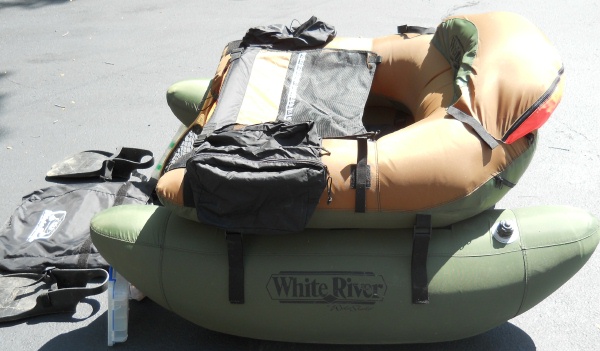

The paddles fold back when the leg moves forward and open when the leg moves back, allowing anglers to move forward in a somewhat less efficient but more natural walking-type motion. An alternative to diving flippers is the "paddle-pusher", or "duck fins." These fins strap onto the angler's feet and have paddles situated on the outsides of the ankles. Seated in the float tube, he paddles across the water with a gentle movement of the flippers, then remains still over the chosen fishing ground. The angler generally wears stocking foot chest waders and scuba diving flippers, so his legs remain dry. Some float tubers switch over time to kayaks or kickboats, which are faster and safer in open water, but die-hard ocean tubers are willing to sacrifice speed for the tube’s portability, stealth. Many float tube anglers customize their crafts with rod holders, lights, and electronic fish finders. A standard float tube consists of an inflated bladder inside a sewn cover providing the seat, reserve air compartments, and tackle storage pockets. Float tubes are used for many aspects of fishing, such as flyfishing for trout or lure fishing for bass, and enable the angler to fish areas otherwise not fishable from the bank.įloat tubes are either "U" or "V"-shaped, or circular.

They were originally doughnut-shaped boats with an underwater seat in the "hole", but modern designs include a V-shape with pontoons on either side and the seat raised above the water allowing the legs of the angler to be the only part of his body to be submerged. A float tube, also known as a belly boat or kick boat, is a flotation device which anglers use to fish from.


 0 kommentar(er)
0 kommentar(er)
